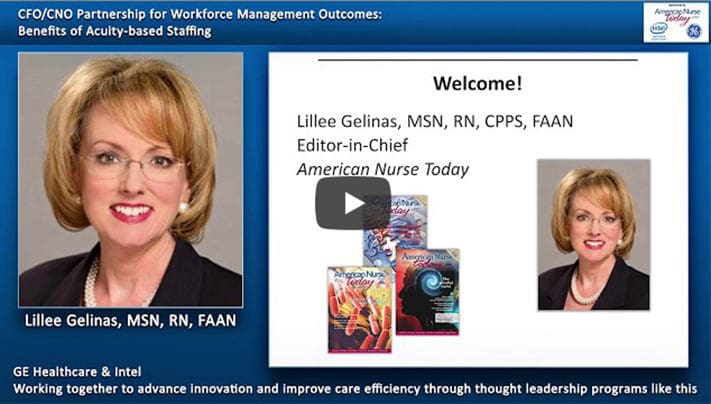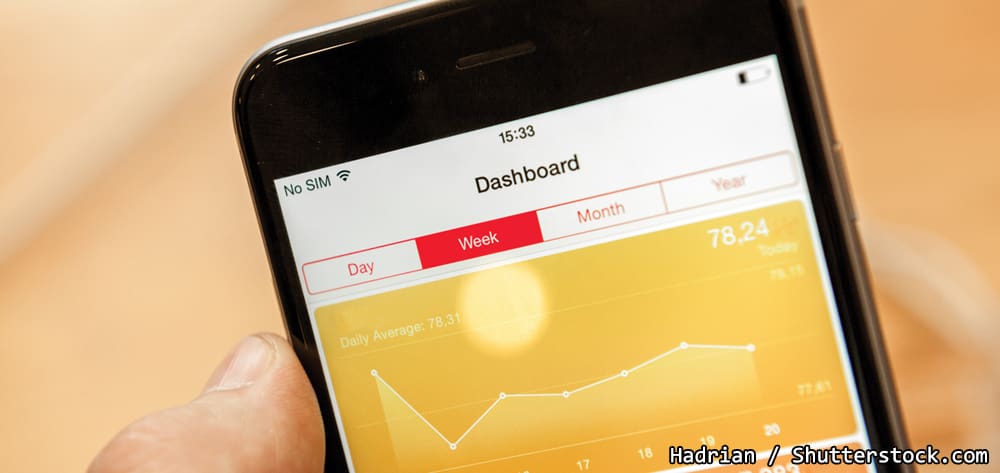With their unique understanding of the entire spectrum of care, nurses are essential to the successful design, development, and adoption of patient-centered information technology (IT). Without input from bedside nurses, IT projects become mainly about the technology itself. With their input, these projects promote better patient care, increase the clinicians’ sense of fulfillment, and yield higher return on investment for the organization.
Nash Health Care System in Rocky Mount, North Carolina, has seen firsthand the mix of people, processes, and technology needed to promote high-quality care. Engaging nurses in continual improvement of technology has helped Nash improve its patient-centered care. Moreover, its thoughtful IT design and receptive, teamwork-oriented culture will help attract a strong Millennial workforce.
Value of IT systems in health care
In health care, an IT system is a collection of automated functions, such as alerts, order sets, care plans, smart tools, and instant messaging. Because these functions must enable clinicians to act quickly and intelligently, they must be designed with clinical input, focus on optimizing patient care, and offer value for the entire care team, patients, and family members.
As patient advocates, nurses are closest to the patient—assessing, providing bedside care, and determining appropriate interventions. IT projects that focus on the patient must involve tools with robust functionality that enables nurses to act quickly and intelligently as patient advocates.
IT solutions that are natural and easy to understand allow for efficiencies demanded by standards, such as The Joint Commission’s (TJC’s) 2015 National Patient Safety Goal on clinical alarm safety. Simply automating through the use of systems alone isn’t enough. Efficient processes are created and adopted at the bedside only through the marriage of technology and the nursing workflow.
Opportunities to redesign and improve workflow and systems
At Nash, a new and much larger emergency department (ED) created the need for a new communication infrastructure. The old ED was small enough for vocal communication; the new ED separates staff into four separate pods. To create efficiencies and meet patient safety standards, leaders decided to implement a mobile communication platform. The new smartphone system connects hospital staff through secure voice and text messaging and serves as a secondary handheld alert-notification device.
The solution’s out-of-the-box functionality was robust, but the functions activated had to aid nurses in their daily workflow. When clinicians recognized their current alerting process was creating alarm fatigue, they worked hand-in-hand with the vendor to examine alarm-management options. While all alerts could have been sent to smartphones, the team instead focused on creating a value-added process that involved bedside nurses in the design. The system was redesigned to send three critical alerts and two notifications to specific care team members. Because ED nurses were engaged in the design phase, smartphones became tools that enabled them to apply the technology to address specific alerts and notifications immediately. This helped ensure the facility met the requirements of TJC’s patient goal on clinical alarm safety; it also led to other communication efficiencies.
Once this communication solution was implemented, time from bed request to bed placement decreased an average of 20 minutes per patient. Before and after go-live surveys in the ED showed a 62% increase in overall nurse satisfaction with their ability to communicate with the rest of the care team using the new technology. Several months later, the communication solution was expanded to the rehabilitation hospital using the same approach. There, overall nurse satisfaction improved 78%.
As with any technology shift, the fact that nurses and other clinical support staff could now communicate with each other using mobile devices needed to be shared with the wider community. Nash leaders emphasized this concept to avoid the perception that nurses were simply texting on their smartphones when working in patient care areas.
Keep listening, keep improving
Good initial design alone isn’t enough. Systems designed to help coordinate care with precision require constant calibration. Nash nurses use the system effectively on a daily basis. The challenge is to have nurses actively embrace the technology while keeping them engaged with continual system improvements—and to keep them vocal about using the technology for improvements or identifying obstacles to quality care. Just as important, leadership must listen to nurses’ concerns.
To obtain feedback on the alarm management system, Nash leaders placed a large piece of paper in the commons area; it contained one question: “What is your most annoying alert?” This gave nurses an organized and transparent way to provide feedback. By the end of the day, the term “apnea alerts” appeared all over the paper. Further investigation found that two of the physiologic monitors used daily had incorrectly configured apnea alerts, and alarm volumes from those devices were causing excessive apnea alarms. After the manufacturer’s representative visited the hospital to recode the devices, false apnea alarms in the ED decreased 70%. If leadership hadn’t solicited feedback, nurses would still be distracted by false alarms.
Understanding the challenges of value-based care, Nash’s visionary leaders plan to continue coupling technology with the voice of the nursing staff to produce optimal outcomes. The next step is to use technology to push needed information to nurses. Pushing critical laboratory values, STAT order notifications, and team communication will reduce the time spent looking for timely information.
Harnessing the energy of younger generations
Maximizing Millennials in the Workplace, a 2012 whitepaper by UNC’s Kenan-Flagler Business School, points out that by 2020, nearly half of all workers (46%) will be Millennials (born from the early 1980s to the early 2000s). As baby boomers exit the workforce, competition for skilled workers and potential leaders in nursing and other fields with expected shortages will grow fierce.
Confident, team-oriented, high-achieving, and tech-savvy Millennials expect collaborative work cultures receptive to their ideas. And although most want training and mentorship from managers, they don’t necessarily see managers as a primary source of knowledge. Instead, they expect to receive the resources and technology needed to find information on their own.
Nearly 90% of Millennials report their smartphones never leaves their sides, and 60% expect everything to be accessible from their mobile devices by 2019. A 2011 McCann Worldgroup survey found almost half of Millennials would give up their sense of smell to keep their computer or mobile phone. They perceived access to these devices as a sense—a means of perceiving and responding to reality.
The nursing profession is evolving constantly. Harnessing the energy of future generations is crucial to our profession. The workforce advantage will go to hospitals whose culture nurtures Millennials’ optimism and desire to contribute—a culture that puts at their fingertips the technology they’ve come to rely on.
Victoria P. Brock is coordinator of clinical and nursing informatics at Nash Health Care Systems in Rocky Mount, North Carolina. David Wilcox is a healthcare executive with Cerner Corporation in Kansas City, Missouri.
Selected references
Brack J. Maximizing millennials in the workplace: White paper; 2012. http://www.kenan-flagler.unc.edu/executive-development/custom-programs/~/media/DF1C11C056874DDA8097271A1ED48662.ashx
McCann Worldgroup. Truth about youth. 2011. www.scribd.com/doc/56263899/McCann-Worldgroup-Truth-About-Youth#scribd
Meeker M. Internet trends 2015—code conference. May 27, 2015. http://www.kpcb.com/blog/2015-internet-trends
Montenery SM, Walker M, Sorensen E, et al. Millennial generation student nurses’ perceptions of the impact of multiple technologies on learning. Nurs Educ Perspect. 2013;
34(6):405-9.
Shaw H. Chapter 7: Millennials: Can we fix it? Yes, we can! In: Sticking Points: How to Get 4 Generations Working Together in the 12 Places They Come Apart. Carol Stream, IL: Tyndale House Publishers; 2013.
Click to read the next article: Using technology to engage patients










